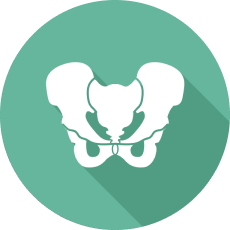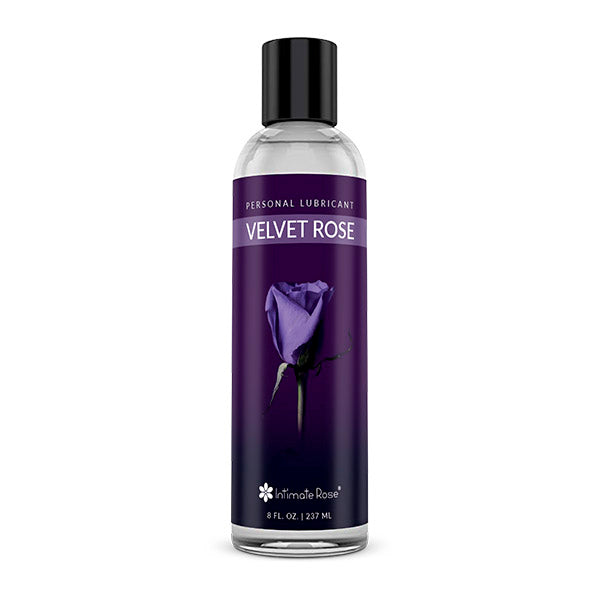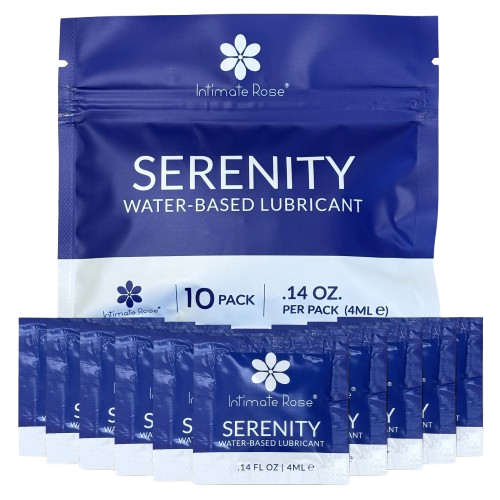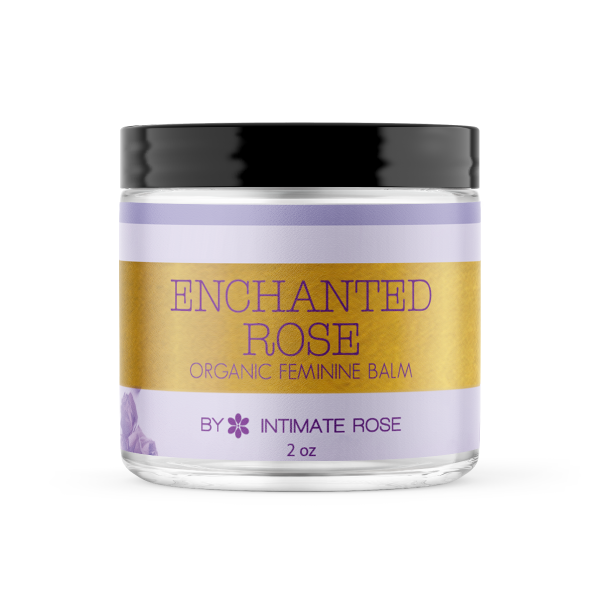Causes | Symptoms | How to Treat
Hot flashes, tender breasts, and insomnia can be symptoms of low estrogen, the main hormone that distinguishes men from women. As well as being a vital hormone to assist in female sexual development and support the reproductive system, estrogen also contributes to several other important systems in the body.
So even though hormone fluctuations are perfectly normal at certain times of a woman’s life, sufficient amounts of estrogen are essential for women to stay healthy and happy.
In this article, we’ve covered 10 common symptoms of low estrogen and how to treat it.
How Estrogen Helps The Body
Although estrogen is most commonly known for supporting female sexual development, pregnancy, and menstruation, it also assists metabolism, mood, and body weight, as well as contributing to bone health, the ability to think clearly aka brain fog, and cardiovascular health. Because it helps to keep the vagina lubricated, estrogen is also vital for enjoyable sex.
What Causes Low Estrogen Production?
It is usual for estrogen levels to rise and fall throughout a woman’s life, mainly during menstruation and pregnancy. However, consistently low levels of estrogen are usually a sign that a more permanent change is going on in the body, such as perimenopause or menopause.
This has largely got to do with the fact that estrogen is primarily produced by the follicles within the ovaries. But when women begin perimenopause, the ovaries are designed to make less and less estrogen to prepare the body for a complete halt to the production of estrogen during menopause.
For women who are not of menopausal age, low estrogen could be a symptom of an underlying condition like ovarian cysts, anorexia, kidney disease, turner syndrome, excessive exercise, or pituitary gland problems. Women who have had their ovaries removed due to cancer or damaged during radiation treatment also experience consistently low estrogen levels.
What Are the Most Common Symptoms Of Low Estrogen?
Low estrogen in women can result in a variety of symptoms with weight gain around the belly, dry skin, and trouble concentrating among the milder symptoms. Below we’ve covered the 10 most common symptoms of low estrogen.
1. Sore Breasts
Sore breasts can be one of the most obvious physical symptoms of low estrogen in women of reproductive and menopausal age. It happens when estrogen levels naturally fall during the week before menstruation, as well as during menopause.
2. Irregular Menstruation & No Menstruation
Irregular periods are generally linked to women going through perimenopause and are a common symptom of low estrogen levels. When the production of estrogen stops completely during menopause, so too does the menstrual cycle.
3. Sleep Problems
Melatonin, which is an important hormone to induce sleep, is made by serotonin, and serotonin is closely linked to estrogen. So when estrogen production is low, the production of serotonin is also low, meaning melatonin is not as abundant and your sleep can be disrupted.
4. Headaches
Headaches, and sometimes migraines, especially if they occur before or during menstruation, can be a symptom of low estrogen. Scientists believe these headaches occur due to the way estrogen impacts brain chemicals that are responsible for feeling pain.
5. Mood Swings & Increased Irritability
Remember how estrogen is closely linked to the production of serotonin? Well, serotonin is a feel-good chemical or a mood booster that helps to keep you upbeat and happy. So when estrogen is low, your mood can be low too.
6. Hot flashes & Night Sweats
One of the main causes of hot flashes and night sweats is the impact that low estrogen levels can have on the hypothalamus, which is responsible for regulating body temperature.
This rise in body temperature can sometimes happen to women during their monthly cycle, during pregnancy, and post-partum, but it is typically during perimenopause and menopause that hot flashes and night sweats affect most women.
7. Recurring Urinary Tract Infections
Even though most urinary tract infections are assigned to harmful bacteria entering the urinary tract, estrogen plays a role too. Estrogen helps keep the lining of the urethra strong and healthy, so when estrogen levels fall the urethra lining begins to thin and weaken, meaning harmful bacteria find it easier to enter and can result in recurring urinary tract infections.
8. Brittle Bones & Osteoporosis
When it comes to healthy bones, estrogen works alongside vitamin D, calcium, and other minerals to keep them strong and dense. When estrogen levels drop, however, bone density & strength begin to deteriorate, typically manifesting in the spine first which results in a gradually formed stoop.
Interestingly, most women with brittle bones don’t know it until they break a bone and their doctor notices the onset of osteoporosis.
9. Vaginal Atrophy
Vaginal atrophy, also known as vaginal dryness, is considered one of the more acute symptoms of low estrogen. It typically occurs during perimenopause or menopause, when the vaginal walls begin to thin and natural lubrication reduces.
As well as menopause, other causes of vaginal atrophy are linked to breastfeeding, having your ovaries removed, early onset menopause, and taking medications for uterine fibroids or endometriosis.
10. Dysapeurnia
When the vaginal canal is dry due to the lack of estrogen, penetration can result in friction, chaffing, and ultimately a painful experience during intercourse. Dyspareunia, the medical term for painful sex, is described as a repetitive pain in the genitals leading up to, during, or after sex.
Although it is commonly associated with low levels of estrogen during menopause, women of any age can suffer from dyspareunia due to pelvic injuries, negative sexual experiences, or psychological fear of sex.
How To Treat Low Estrogen Symptoms
Symptoms of low estrogen will vary from woman, as will the efficacy of the treatment options. So what feels right for one woman, might not feel right for another. What’s most important when it comes to rebalancing your hormones is that you give yourself time to find the treatment that suits you. This might take some trial and error.
Hormone Replacement Therapy
For many women, hormone replacement therapy is the go-to for treating low estrogen levels, and these days there are a variety of choices available. Estrogen creams, pills, patches, vaginal rings, and vaginal estrogen tablets are all designed to increase estrogen levels and rebalance hormones to improve symptoms. If you are considering hormone replacement therapy, make an appointment with your doctor or OBGYN to discuss the options.
Hormone replacement therapy does not suit all women, however. Smokers, women with liver disease, and those with a family history of blood clotting are usually advised against HRT. As are women who have recovered from breast cancer or reproductive cancer.
Hormonal and Non Hormonal Menopause Relief
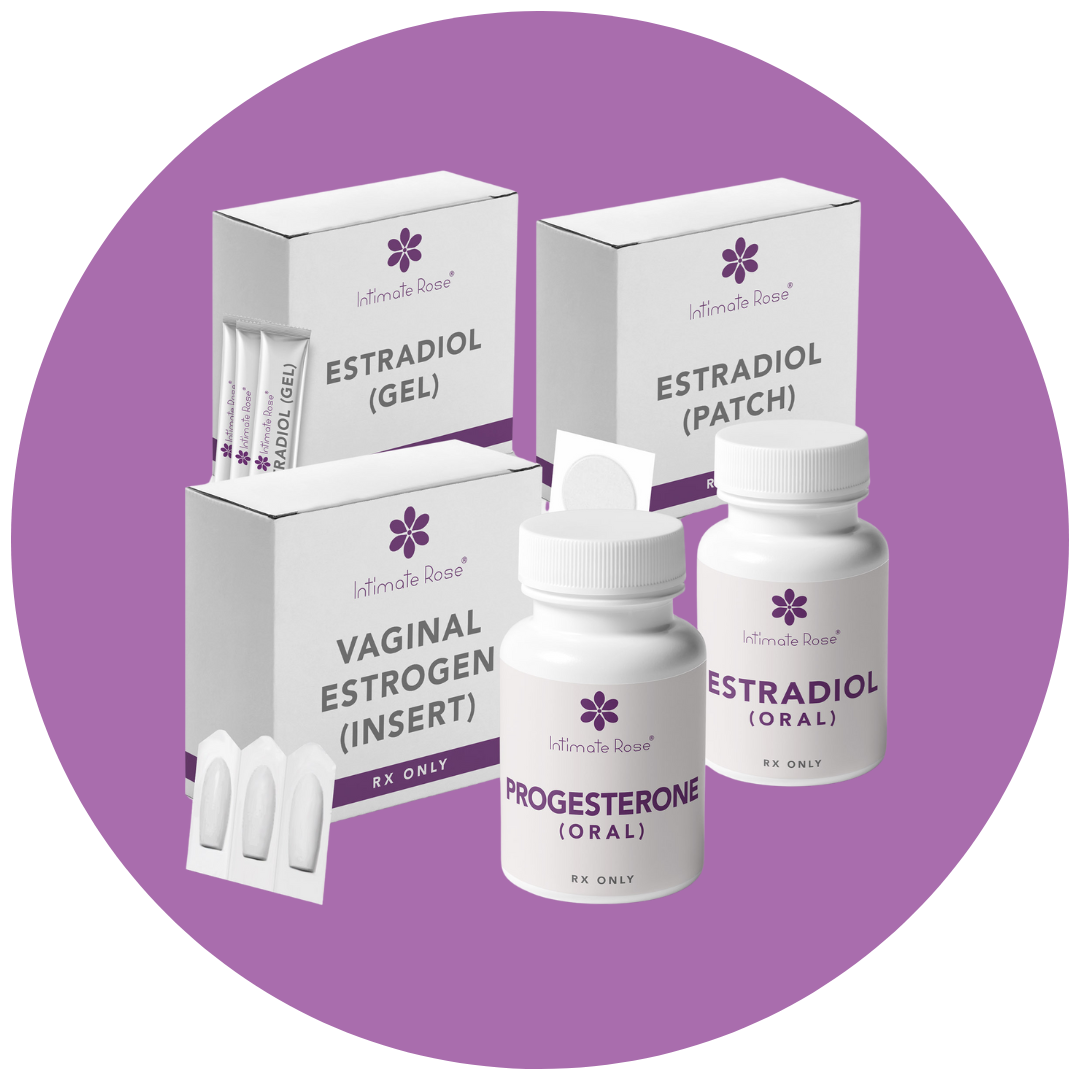
Chasteberry Supplements to Balance Hormones
For those who are not candidates for HRT, or who prefer to treat their body with natural alternatives, female health experts recommend Chasteberry supplements to treat low estrogen symptoms and rebalance hormone levels. Also known by its Latin name, Vitex agnus-castus, Chasteberry has been used as a natural remedy for women’s reproductive health for over 2500 years.
When taken daily, our Intimate Rose Chasteberry Supplements help the pituitary gland to rebalance hormones and treat low estrogen levels, as well as menopausal symptoms like; hot flashes, vaginal dryness, night sweats, lack of libido, mood swings, and interrupted sleep.
A Healthy Diet
Never underestimate the power of your food. Eating a healthy diet not only helps to maintain a physically fit body but also helps to support your hormonal health. Cutting down on processed foods and eating more whole foods like fruit, vegetables, beans, seeds, legumes, and nuts, as well as drinking 1-2 liters of water per day will have a noticeable impact on the severity of symptoms associated with low estrogen.
Regular Exercise
Several studies have proven that regular exercise is highly effective in treating low estrogen levels and it doesn’t have to be strenuous exercise, or daily. One study, in particular, concluded that 36 sessions of anaerobic exercise for 12 weeks, proved more efficient in treating low estrogen levels than 72 sessions of aerobic exercise in the same period.
(Anaerobic exercise is similar to aerobic exercise but is performed faster and with more intensity for shorter amounts of time, for example, HIIT sessions, pilates, yoga, and circuit training.)

Get your personalized HRT plan!

Get your personalized HRT plan!
Conclusion
Although it is considered normal for hormones to rise and fall throughout a woman’s lifetime, it is imperative to rebalance any fluctuations for optimal health. Low estrogen levels can result in a variety of symptoms ranging from fleeting breast tenderness to severe vaginal dryness, but there are several treatment options available.
If you can relate to any of the low estrogen symptoms discussed above, consider speaking with your doctor about natural supplements like Chasteberry, the power of exercise, and your diet, as well as HRT.
References
What happens during the typical 28-day menstrual cycle? - https://www.womenshealth.gov/menstrual-cycle/your-menstrual-cycle

Get your personalized HRT plan!



